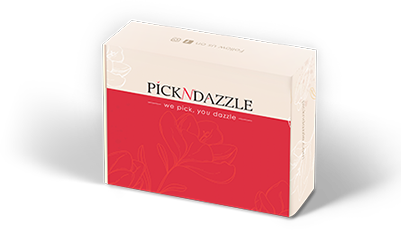Now the good news: Jachno says go ahead and wear polish every single day and change it as often as you like. “Toenails are quite resilient because they don’t get as much use as your hands do, and because they’re thicker than fingernails,” she explains. Looks like our toes are in for a good season! Here Jachno shares more advice for upping the ante on your between-pedis routine.
3 expert pedi strategies to master
So we know now that toenails are hardier than fingernails, but for that very reason, feet pose their own challenges in terms of upkeep. Here, a few strategies for preventing and solving common pedi probs.
Fight discoloration
All winter our feets are cooped up in closed-toe shoes all winter. Depriving your nails of air increases the risk of fungal infections, which can leave you with unsightly yellow or white blotches on nail beds. To get rid of discolored spots, Jachno recommends removing all polish, and then using a fine buffing block to smooth down and renew the surface of nails.
Check your bottles
Another possible cause of visible toenail damage? Certain ingredients in certain nail polishes. But more and more brands are offering healthier options that are 3-free (made without dibutyl phthalate, toluene, and formaldehyde) or 5-free (which add formaldehyde resin, and camphor to the 3-free list)—with color selections rivaling traditional polishes.
Prevent (and deal with) ingrown nails
You might have a closet filled with shoes to die for, but ill-fitting footwear is one of the most common causes of painful ingrown toenails. To help prevent ingrowns, first make sure to clip toenails straight across, rather than curving
deeply on the sides. If you do get an ingrown nail and the ache is driving you crazy, Jachno recommends using the pointed end of a metal nail file to push a small piece of cotton under the nail in the corner that’s affected. “This will help alleviate the pain by creating a small wedge between the nail and skin. You can change the cotton every other day until it feels better,” she says. It will also help lift the nail and have it grow above the skin edge.
6 Steps to a Perfect At-Home Pedi
1. Fill a bathtub or large bowl with warm water and add one cup of powdered milk. “The lactic acid helps soften calluses and cuticles,” says Jachno.
2. Soak feet for 10 minutes, then push back cuticles gently, sweeping back in a circular motion, using an orange wood stick to push back cuticles.
3. Use a pointed metal file to clean under each nail, working carefully.
4. To remove and soften cuticles, use a foot grater (also called a “rasp”) only where you have callous build-up, then follow with a foot file to smooth out any rough areas.
5. Apply a base coat, two coats of color, and finish with a top coat. Jachno advises against wearing closed-toe shoes for at least four hours after applying polish to prevent smudges.
6. Use an intensive lotion or cream right before bed. This will allow the moisture to penetrate overnight, and keep feet hydrated and smooth.
Source: www.beautylish.com




